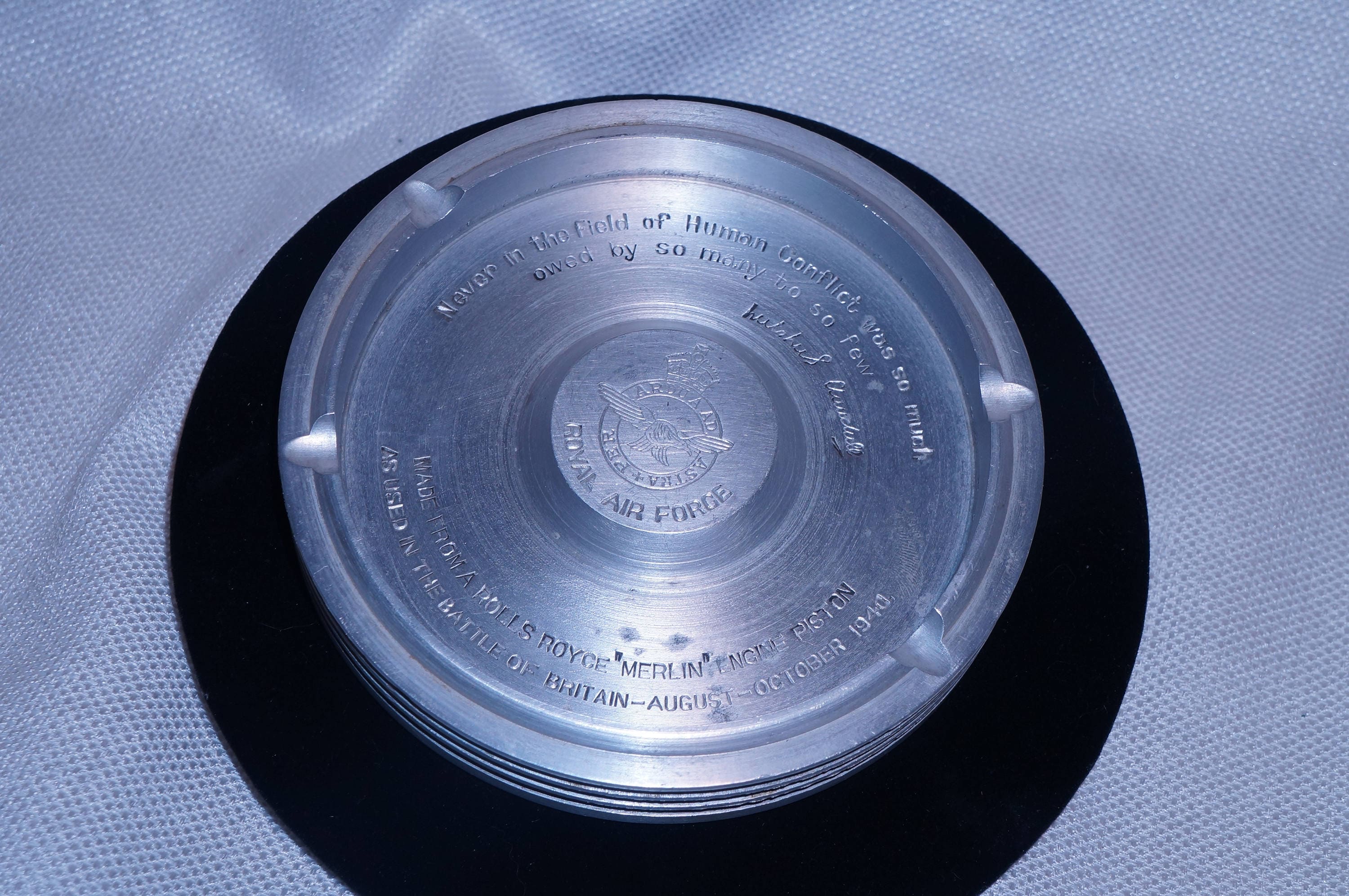
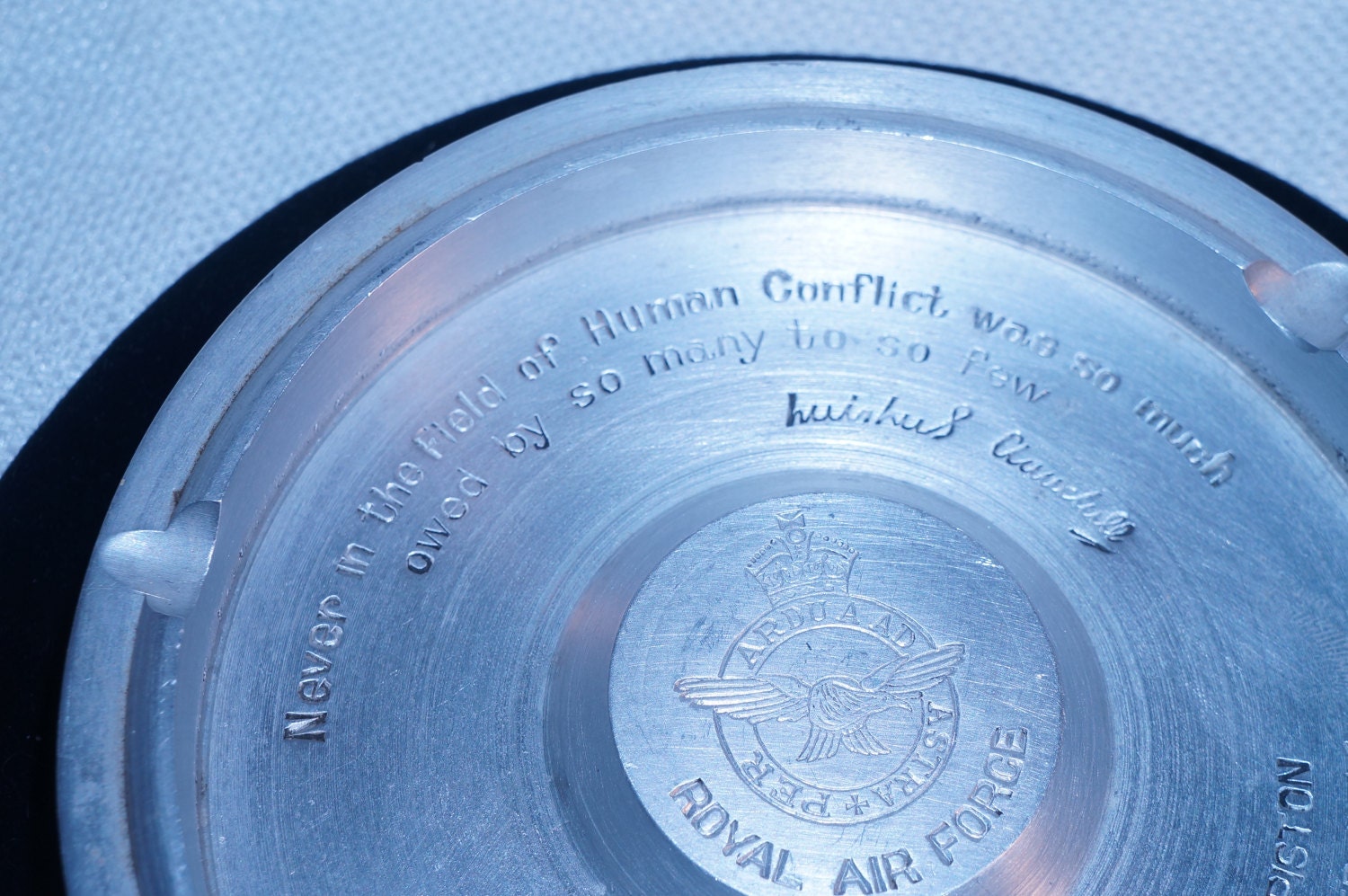
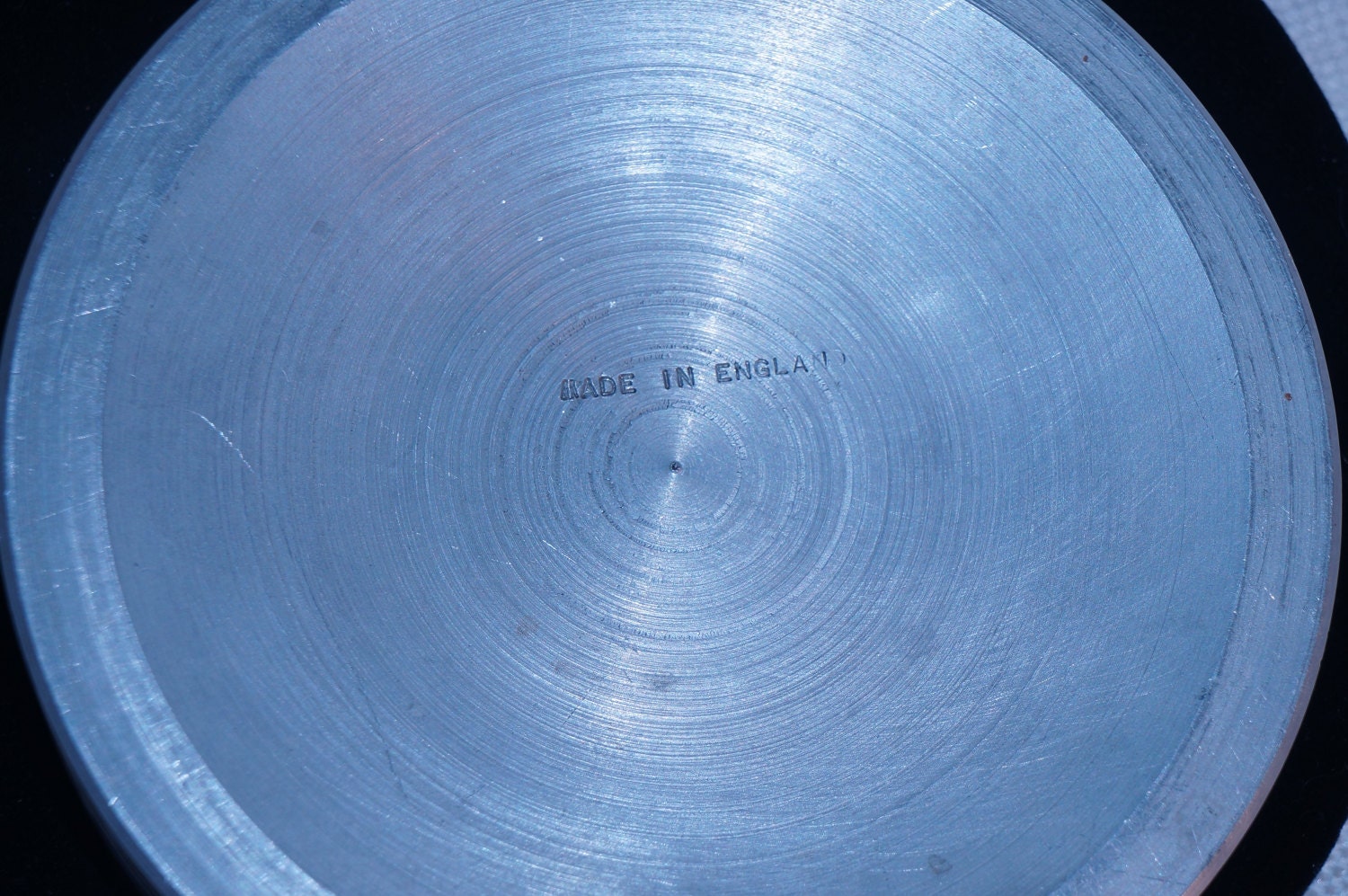
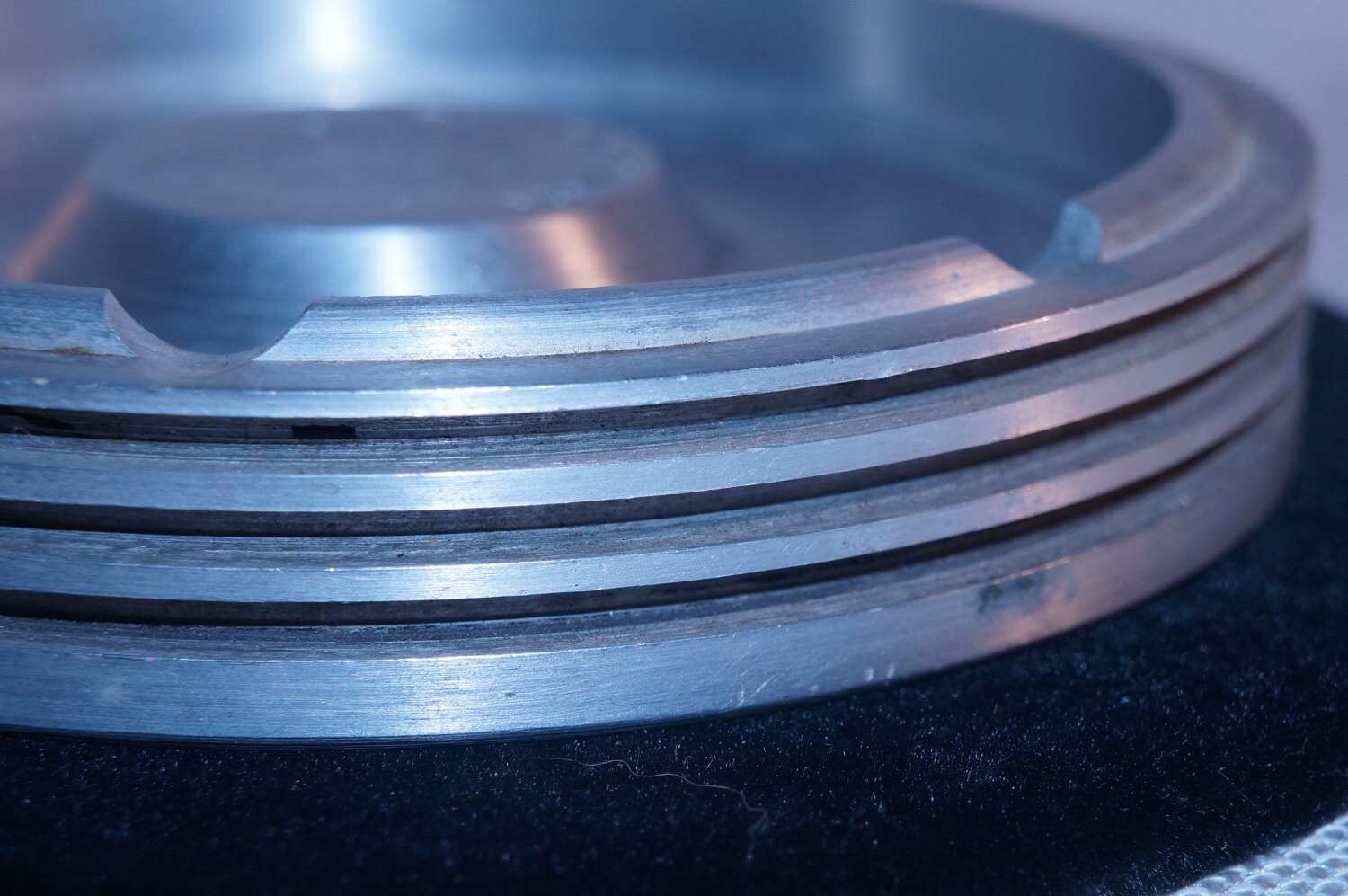
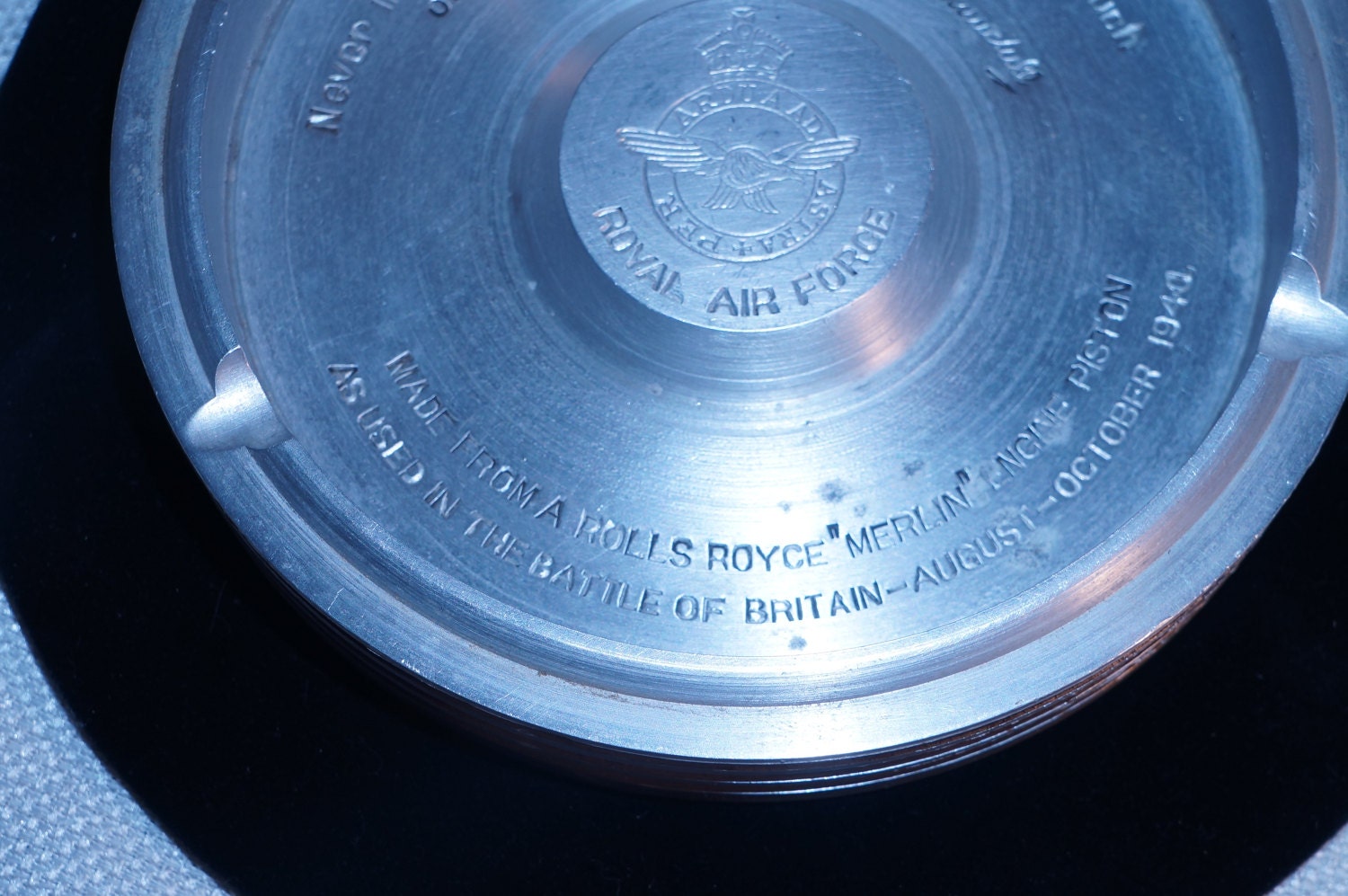
WWII Royal Airforce Rolls Royce Merlin engine piston ashtray* Battle of Britain*Celebrate one of the greatest days of resistance in history!
$120.00
306II "Never in the Field of Human Conflict was so much owed by so many to so few" Winston Churchill (engraved on piece)
This is an amazing piece of history. These were made in limited numbers just after WW2 for RAFA to raise funds for Ex-RAF personal. This is a GREAT PIECE of Second World War history in the form of an ashtray crafted from a ‘Battle of Britain’ Rolls Royce Merlin engine piston, as used on the Spitfire. (Measures 5 1/4" across x 1" high)
**The Royal Air Force (RAF) and Fleet Air Arm (FAA) had included personnel from outside the United Kingdom from before the beginning of the Second World War and many served in the Battle of Britain in 1940. Many were volunteers from the British Empire and refugees and exiles from German-occupied Europe.
The RAF Roll of Honour recognises 574 pilots, from countries other than the United Kingdom, as flying at least one authorized, operational sortie with an eligible unit during the period between 10 July to 31 October 1940, alongside 2,353 British pilots. The numbers differ slightly from the participants whose names are engraved on the Battle of Britain Monument in London, unveiled on 18 September 2005.
All pilots, regardless of nationality, who flew with British units during the Battle are known collectively, after a phrase coined by Winston Churchill, as "The Few".
**The Spitfire was designed as a short-range, high-performance interceptor aircraft by R. J. Mitchell, chief designer at Supermarine Aviation Works, which operated as a subsidiary of Vickers-Armstrong from 1928. Mitchell pushed the Spitfire's distinctive elliptical wing (designed by B. Shenstone) to have the thinnest possible cross-section, helping give the aircraft a higher top speed than several contemporary fighters, including the Hawker Hurricane. Mitchell continued to refine the design until his death in 1937, whereupon his colleague Joseph Smith took over as chief designer, overseeing the development of the Spitfire through its multitude of variants.
During the Battle of Britain, from July to October 1940, the Spitfire was perceived by the public to be the main RAF fighter, though the more numerous Hawker Hurricane shouldered a greater proportion of the burden against the Nazi German air force, the Luftwaffe. Spitfire units, however, had a lower attrition rate and a higher victory-to-loss ratio than those flying Hurricanes because of its higher performance. Spitfires in general were tasked with engaging Luftwaffe fighters (mainly Messerschmitt Bf 109E series aircraft which were a close match for the Spitfire) during the Battle.
After the Battle of Britain, the Spitfire superseded the Hurricane to become the backbone of RAF Fighter Command, and saw action in the European, Mediterranean, Pacific and the South-East Asian theatres. Much loved by its pilots, the Spitfire served in several roles, including interceptor, photo-reconnaissance, fighter-bomber and trainer, and it continued to serve in these roles until the 1950s. The Seafire was a carrier-based adaptation of the Spitfire which served in the Fleet Air Arm from 1942 through to the mid-1950s. Although the original airframe was designed to be powered by a Rolls-Royce Merlin engine producing 1,030 hp (768 kW), it was strong enough and adaptable enough to use increasingly powerful Merlins and, in later marks, Rolls-Royce Griffon engines producing up to 2,340 hp (1,745 kW); as a consequence of this the Spitfire's performance and capabilities improved over the course of its life.
Shipping from United States
Processing time
1-3 business days
Estimated shipping times
- United States : 3 - 5 business days
I'll do my best to meet these shipping estimates, but can't guarantee them. Actual delivery time will depend on the shipping method you choose.
Customs and import taxes
Buyers are responsible for any customs and import taxes that may apply. I'm not responsible for delays due to customs.
Payment Options
Returns & Exchanges
I don't accept returns, exchanges, or cancellations
But please contact me if you have any problems with your order.